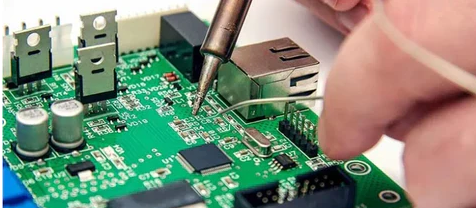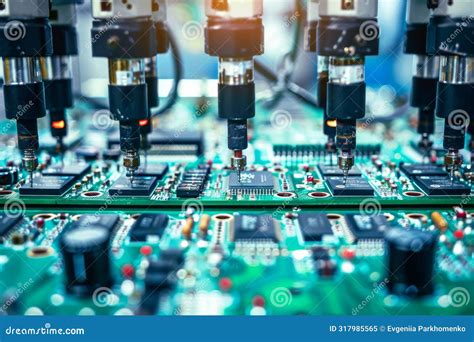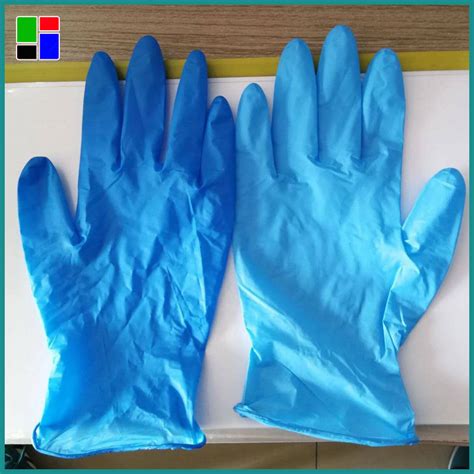Unlocking Innovation: The Power of Custom PCB Assembly
Key Takeaways
Custom PCB assembly (PCBA) serves as a foundational element in driving innovation and efficiency across a multitude of industries. One of the primary advantages of employing custom PCB assembly is its unparalleled flexibility, which allows businesses to tailor circuits precisely to their needs. This adaptability not only enhances design capabilities but also reduces time to market. Furthermore, utilizing advanced processes in pcb assembly, such as surface mount technology (SMT) and automated inspection systems, contributes significantly to improving quality control and reducing errors during production.
Moreover, the integration of pcba into the manufacturing pipeline can lead to substantial cost savings by optimizing material use and streamlining production processes. By harnessing these technologies, industries ranging from consumer electronics to medical devices can foster creativity while ensuring that their products meet stringent performance standards. Collaborating with specialized firms that focus on custom PCB assembly can further unlock design potentials that were previously unattainable, reflecting a key takeaway: embracing custom pcb assembly not only enhances existing designs but also opens doors for innovative solutions in unprecedented ways.
Introduction to Custom PCB Assembly: A Catalyst for Innovation
In today’s rapidly evolving technological landscape, custom PCB assembly plays a crucial role as a catalyst for innovation. This process allows designers and engineers to develop tailored circuit boards that meet specific functionality and performance requirements across various sectors. The flexibility inherent in pcb assembly means that companies can optimize designs for unique applications, whether in consumer electronics, automotive systems, or medical devices.
One of the key advantages of custom PCBA is the potential for reduced time-to-market. By leveraging modern design tools and techniques, teams can iterate on their prototypes quickly and bring new products to consumers faster than traditional methods would allow. Additionally, the integration of advanced technologies, such as surface mount technology (SMT) and automation in the assembly process, enhances both precision and efficiency.
Moreover, custom pcb assembly can lead to improved component density on circuit boards, which is particularly important as devices become smaller while retaining or increasing functionality. This aspect not only supports miniaturization trends but also contributes significantly to cost-effectiveness through better materials utilization.
| Benefit | Description |
|---|---|
| Tailored Solutions | Custom designs catered to specific needs |
| Faster Turnaround Times | Streamlined processes that expedite production |
| Higher Component Density | Compact designs that save space |
| Cost Efficiency | Improved use of materials reduces costs |
As industries continue to embrace digital transformation, understanding the nuances of custom pcb assembly will empower innovators to unlock new potentials and drive forward-thinking solutions into their projects.
The Key Benefits of Custom PCB Assembly in Modern Industries
The world of electronics continues to evolve at a rapid pace, and custom PCB assembly stands at the forefront as a key enabler of technological advancement. One major benefit of utilizing PCBA lies in its ability to cater to specific project requirements, ensuring that products are optimized for performance and efficiency. The flexibility inherent in customization allows manufacturers to design circuit boards that meet unique demands in various sectors, from automotive to healthcare. This adaptability not only enhances functionality but also results in significant cost savings over time, as companies can avoid the pitfalls associated with off-the-shelf solutions.
Furthermore, pcba can significantly accelerate the development cycle. By engaging in a tailored assembly process, teams can expedite the transition from idea to prototype and ultimately to market-ready products. This speed becomes particularly crucial when striving to stay ahead of competitors or meet rapidly changing consumer demands.
“Investing in custom PCB assembly is investing in innovation—ensuring your projects not only meet standards but redefine them.”
Moreover, manufacturers leveraging custom PCB assembly benefit from enhanced reliability and quality control throughout the production process. Tailored assemblies allow for detailed scrutiny at every phase, ensuring that products function consistently under various conditions and use cases.
In conclusion, embracing PCBA provides a plethora of advantages that extend beyond mere circuit design—impacting efficiency, quality, and innovative potential across industries. The strategic use of customization empowers businesses to forge their unique paths while paving the way for revolutionary advancements in technology.
Understanding the PCB Assembly Process: From Design to Production
The pcb assembly process is a crucial phase in electronic manufacturing that bridges the gap between innovative design and functional production. It begins with the meticulous detailing of the circuit design, where engineers leverage advanced software tools to create layouts that meet specific product requirements. Once the design is finalized, it transitions into the prototyping stage, where small quantities of pcba (printed circuit board assembly) are produced. This stage allows for testing and refinement before mass production begins. During assembly, various components are meticulously placed onto the pcb and soldered to establish electrical connections that are vital for device functionality.
With the rise of automation and robotics in manufacturing, custom PCB assembly has increasingly adopted advanced technologies such as surface mount technology (SMT) and pick-and-place machinery, improving both precision and speed. This not only minimizes errors but also enhances scalability for larger production runs. In addition to these technological advancements, implementing lean manufacturing principles in this process further streamlines operations, reducing waste and ensuring high-quality output. Ultimately, a well-executed pcb assembly process not only boosts efficiency but also acts as a catalyst for continuous innovation across various industries by enabling rapid iteration from development through to final production.
Advanced Technologies Shaping Custom PCB Assembly
The landscape of custom PCB assembly is rapidly evolving, driven by advancements in technology that enhance precision and efficiency. One key area of development is the integration of automated assembly processes, which streamline the PCB assembly workflow, reduce human error, and significantly lower production times. Additionally, the use of high-speed pick-and-place machines allows for greater component density on printed circuit boards, facilitating more complex designs that cater to the growing demand for miniaturization in electronics.
Moreover, the incorporation of 3D printing technology into PCB assembly processes has revolutionized prototyping. This method enables designers to create and test multilayer PCBs quickly without incurring high costs or prolonged lead times associated with traditional fabrication methods. Furthermore, smart manufacturing solutions, such as IoT integration in production systems, offer real-time monitoring and data analytics that enhance quality control and operational efficiency.
These advanced technologies not only transform how pcba projects are developed but also open up new avenues for innovation across various industries. By adopting these technologies, companies can better respond to market needs and deliver superior products that push the boundaries of what is possible in electronic design. The potential applications are limitless, fostering a culture of creativity and enabling engineers and designers to explore groundbreaking solutions that were once thought unattainable.
Enhancing Efficiency: Lean Manufacturing in PCB Assembly
In the realm of custom PCB assembly (PCBA), lean manufacturing emerges as a transformative approach that optimizes processes and reduces waste. This methodology focuses on streamlining production through continuous improvement and efficiency. By employing techniques such as Just-In-Time (JIT) inventory and value stream mapping, organizations can significantly diminish lead times and enhance quality in PCB assembly processes. The integration of lean principles not only fosters an environment of collaboration among teams but also empowers engineers to identify and eliminate bottlenecks that hinder productivity. In turn, this enables faster time-to-market for innovative electronic designs, giving businesses a competitive edge. Moreover, with the implementation of advanced manufacturing technologies, firms can leverage automation to further enhance their PCBA efforts, ensuring precision and consistency. As industries increasingly embrace lean practices in custom PCB assembly, they unlock the potential for increased creativity and adaptability to changing market demands—underscoring the critical role of efficiency in driving innovation forward.
Case Studies: Successful Innovations Driven by Custom PCBs
Custom PCB assembly has revolutionized the landscape of electronic design and manufacturing, making it pivotal in various industries. One exemplary case is in the medical sector, where specialized PCBA processes have led to the creation of compact, efficient medical devices. A notable innovation is the development of wearable health monitors that provide real-time data to healthcare professionals. These devices rely on meticulously designed pcbs that integrate advanced sensors and communication modules, showcasing how tailored pcb assembly can enhance patient care and streamline healthcare operations.
Another striking example comes from the automotive industry, where custom PCB assembly has paved the way for cutting-edge advancements in electric vehicles (EVs). Through precise engineering and manufacturing techniques, companies have developed sophisticated control systems that manage battery health and optimize performance. This not only fulfills consumer demand for reliability but also aligns with broader sustainability goals.
In the realm of consumer electronics, custom pcba processes have enabled innovations like smart home devices. These gadgets leverage smart pcbs that interconnect various functionalities—from energy management to home security—providing users with effortless control over their living environments. Such advancements reveal how custom PCB assembly fosters creativity while meeting consumer expectations.
These case studies illustrate that the impact of custom pcb assembly extends beyond mere functionality; it serves as a key driver of innovation. By examining these successful implementations, industries can draw inspiration and insights for their own projects, making clear that embracing custom PCBA solutions truly unlocks immense creative potential in electronic design and manufacturing.
Future Trends in Custom PCB Assembly and Electronic Design
The landscape of custom PCB assembly is rapidly evolving, influenced by advancements in technology and shifts in market demands. As industries increasingly rely on smart technologies, the significance of PCB assembly becomes more pronounced. Future trends indicate a growing focus on automation within the PCBA process, streamlining production and enhancing accuracy. The integration of methodologies like Industry 4.0 is revolutionizing manufacturing, enabling real-time data analytics and predictive maintenance to optimize production workflows.
Moreover, the push for sustainability is prompting manufacturers to adopt eco-friendly materials and processes in custom PCB assembly. This includes the use of biodegradable substrates and energy-efficient manufacturing techniques that not only reduce environmental impact but also appeal to a more environmentally conscious consumer base.
The rise of miniaturization in electronic devices necessitates advanced techniques in PCB assembly to accommodate tighter spaces without compromising performance. Innovations such as flexible PCBs are gaining traction, allowing for intricate designs that can bend and twist without losing functionality.
Furthermore, as industries explore the Internet of Things (IoT), the demand for reliable and compact PCBA solutions is expected to surge. This trend will likely lead to more research into adaptive circuitry that can automatically respond to varying operational conditions, enhancing device reliability.
In culmination, the future of custom PCB assembly looks promising with its potential to drive efficiency and foster innovation across diverse sectors. Embracing these emerging trends will not only assist organizations in maintaining competitive advantages but also in unlocking new possibilities for electronic design and development.
Unlocking Your Project’s Potential: Best Practices for Custom PCBs
Embarking on a project that involves custom PCB assembly can be both exciting and challenging. To truly unlock your project’s potential, it is essential to adhere to best practices that enhance the efficiency and effectiveness of the PCB assembly process. Firstly, a thorough understanding of design specifications is crucial. This includes selecting the right materials, components, and layouts to ensure optimal performance. Collaborating closely with your PCBA manufacturer can yield insights into material compatibility and sourcing options, vital for minimizing costs and delays.
Additionally, leveraging simulation tools can help identify potential issues early in the design phase. These tools allow designers to visualize how the pcb assembly will function in various scenarios before production begins. Another important aspect is adopting a modular design approach, which simplifies testing and allows for easier upgrades in future iterations. Keeping a focus on scalability ensures that manufacturing processes can adapt as production volumes change.
Finally, maintaining an open line of communication throughout each phase—from initial design through to final assembly—can prevent misunderstandings and streamline adjustments as needed. By following these best practices in custom PCB assembly, you not only enhance your project’s success but also position it as a beacon of innovation within its respective industry.
Conclusion
In summary, the transformative influence of custom PCB assembly (PCBA) in various sectors cannot be overstated. This process serves as a vital contributor to innovation, offering tailored solutions that meet specific project requirements. By employing advanced techniques and embracing lean manufacturing practices, organizations enhance their efficiency while maintaining high-quality standards. Furthermore, real-world case studies illustrate how businesses have successfully leveraged custom PCBs to streamline their operations and create extraordinary products. As industries continue to evolve, the future of custom PCB assembly promises even greater advancements, positioning it as a cornerstone of modern electronic design and manufacturing. Unlock your project’s potential by integrating the benefits of pcb assembly into your development journey, fostering an environment where creativity can truly flourish.
FAQs
What is custom PCB assembly?
Custom PCB assembly, often referred to as PCBA, refers to the process of constructing printed circuit boards tailored to specific requirements of a project or application. It involves integrating various components onto the circuit board, ensuring proper functionality based on design specifications.
What industries benefit from custom PCB assembly?
Almost every sector, including automotive, consumer electronics, medical devices, and telecommunications, benefits from custom PCB assembly. These industries leverage the unique features of custom designs to enhance performance, reliability, and innovate new products.
How does the PCB assembly process work?
The PCB assembly process includes several stages: design preparation, component sourcing, soldering (either through-hole or surface mount), inspection, and testing. This systematic approach ensures that each board meets quality standards and operational requirements.
What technologies are involved in modern custom PCBA?
Modern custom PCBA utilizes advanced technologies such as automated soldering machines, pick-and-place machines for component placement, and testing equipment for quality assurance. These innovations significantly boost production speed and accuracy.
How does efficient lean manufacturing impact PCB assembly?
Lean manufacturing principles streamline the PCB assembly process, reducing waste and optimizing resource use. This methodology not only enhances overall productivity but also leads to quicker turnaround times in meeting customer demands.
Unlock Your Project’s Potential
For more information on how you can take advantage of custom PCB assembly services, please click here.







